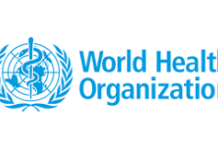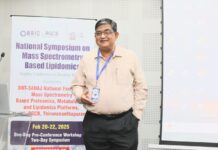A recent prospective study has demonstrated that incorporating novel agents with perioperative durvalumab (Imfinzi) for non-small cell lung cancer (NSCLC) significantly improves rates of pathologic complete response (pCR) and major pathologic response (mPR) compared to historical data with durvalumab and chemotherapy.
The highest response rates were observed when adding the antibody-drug conjugate (ADC) datopotamab deruxtecan (Dato-DXd) to the PD-1 inhibitor and chemotherapy, achieving a pCR of 34.1% and mPR of 65.9%. The addition of the anti-NKG2A antibody monalizumab resulted in a pCR rate of 26.7% and mPR of 53.3%, while the anti-CD73 antibody oleclumab led to a pCR rate of 20% and mPR of 45%. All combinations surpassed historical benchmarks for perioperative treatment with durvalumab plus chemotherapy, as reported by Tina Cascone, MD, PhD, of the University of Texas MD Anderson Cancer Center, at the World Conference on Lung Cancer.
Cascone noted, “All treatments demonstrated manageable safety profiles and comparable surgical rates to current approved regimens. This global phase II study is the first to show promising efficacy and safety for an antibody-drug conjugate in the neoadjuvant setting for resectable NSCLC.”
As reported by medpagetoday.com, the study’s historical benchmark was the phase III AEGEAN trial, which reported a pCR rate of 17.2% and an mPR rate of 33.0% with perioperative durvalumab plus chemotherapy. The new regimens evaluated in this study exceeded these values, with Dato-DXd showing a significant increase in response rates, according to Nan Wu, MD, of Peking University Cancer Hospital in China.
For context, Wu highlighted two recent studies involving nivolumab (Opdivo) plus chemotherapy in resectable NSCLC, which showed pCR rates of 24% and 25%, respectively. Wu commented on the promising efficacy and safety of new immuno-oncology combinations, emphasizing the need for phase III randomized controlled trials for further evaluation.
The phase II NeoCOAST-2 trial assessed durvalumab-based perioperative therapy for resectable NSCLC, following previous studies of durvalumab plus oleclumab or monalizumab in unresectable stage III NSCLC and as neoadjuvant therapy for resectable cases. The trial also investigated the combination of PD-1 inhibitors with novel agents to enhance outcomes compared to existing treatments.
The study included 202 patients with stage IIA-IIIB resectable NSCLC, randomized to receive either oleclumab and durvalumab, monalizumab and durvalumab, or Dato-DXd and durvalumab before and after surgery. All patients received neoadjuvant chemotherapy.
Primary endpoints included pCR and safety/tolerability, with key secondary endpoints being mPR and surgical feasibility. The results showed that 65% of patients receiving oleclumab-durvalumab, 80% of those with monalizumab-durvalumab, and 100% of those with Dato-DXd-durvalumab achieved pCR/mPR. The pCR rate improved with higher PD-L1 expression levels, with Dato-DXd-durvalumab showing the greatest benefit.
Adverse events were generally manageable, with grade ≥3 treatment-related adverse events (TRAEs) occurring in about 30% of patients receiving oleclumab or monalizumab, compared to less than 20% with Dato-DXd. Rates of discontinuation due to AEs were also reported, with the lowest rate in the Dato-DXd group.
Overall, the study provides encouraging results for incorporating novel agents with durvalumab in the perioperative treatment of resectable NSCLC.
























